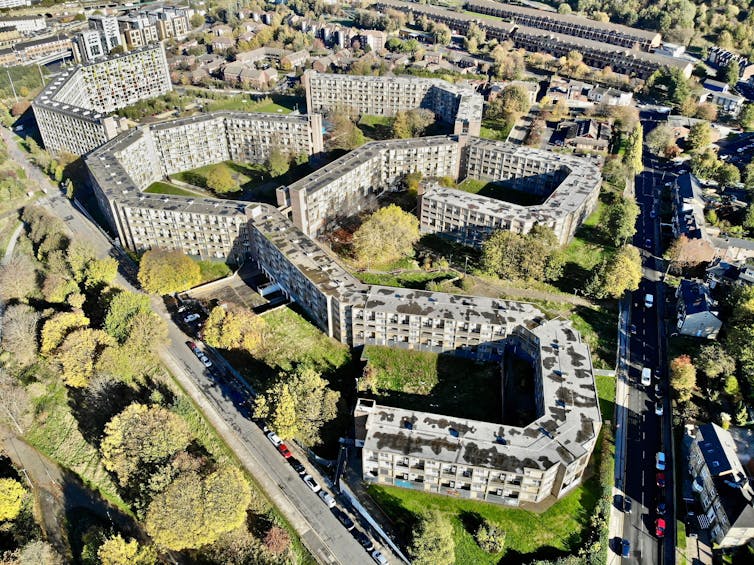Roisin O’Riordan– PhD Candidate, Soil and Ecosystem Services, Lancaster University

When you think about soil, you probably think of rolling fields of countryside. But what about urban soil? With city dwellers expected to account for 68% of the world’s population by 2050, this oft forgotten resource is increasingly important.
City-based agriculture is on the rise. But urban soil is more often associated with contamination and risks to health. However, the earth in our parks, gardens and roadsides actually underpins many aspects of daily life. As our recent research paper highlights, urban soil hosts wildlife, stores water, provides food, helps combat the climate crisis and improves wellbeing.
In other words, soil provides multiple ecosystem services: the benefits we derive from the environment.
Soil is anything but inert material. In New York’s Central Park, researchers in 2014 were surprised to find the breadth of microbial diversity in the soil was similar to that found across the world including in arctic, tropical and desert soils. Less than 17% of the 167,000 kinds of microbes they identified in the park had ever been discovered before.
Urban gardens can be hotspots for biodiversity too. People tend to plant lots of different things or leave the soil undisturbed, both of which allow soil biodiversity to flourish.

Soil is the largest terrestrial store of carbon on the planet, storing nearly twice as much carbon as that in all living plants and the atmosphere combined. Urban soil does this too, preventing large amounts of carbon from reaching the atmosphere as CO₂.
Soil also stores water, which helps prevent localised flooding in built-up areas. Increasingly cities are installing what are known as sustainable drainage systems (SuDS), such as swales and rain gardens. These are planted areas with shallow dips or hollows that can hold excess rainwater run-off, allowing it to slowly infiltrate the soil and prevent drainage infrastructure from being overwhelmed.
In east London, for example, the Derbyshire Street Pocket Park has seen the fenced-in dead-end of a residential street (which mostly hosted flytipping) transformed into a cycle path and community space, with permeable paving, planters and trees. Crucially, the road and pavement were partially dug up and replaced with turf and planting beds.
And then, obviously, there are the nutrients soil provides for the trees and plants that are vital in cities. Urban heat islands, which lead to higher urban air temperatures than surrounding rural areas, can be reduced by vegetation.
Trees and plants also capture air pollution and improve urban air quality, as well as proving the social and aesthetic benefits of green spaces for improved health and wellbeing. But urban trees often fail to survive due to soil compaction or inadequate soil volume. It follows that if we want the benefits of trees, we need to think about the soil first.
Treated like dirt
The problem is that we do not. Urban soil is often mistreated. In construction projects, the re-use of materials needs to be carefully planned to avoid soil being designated a waste material. In 2016, soil made up an incredible 55% of material sent to landfill in the UK.
